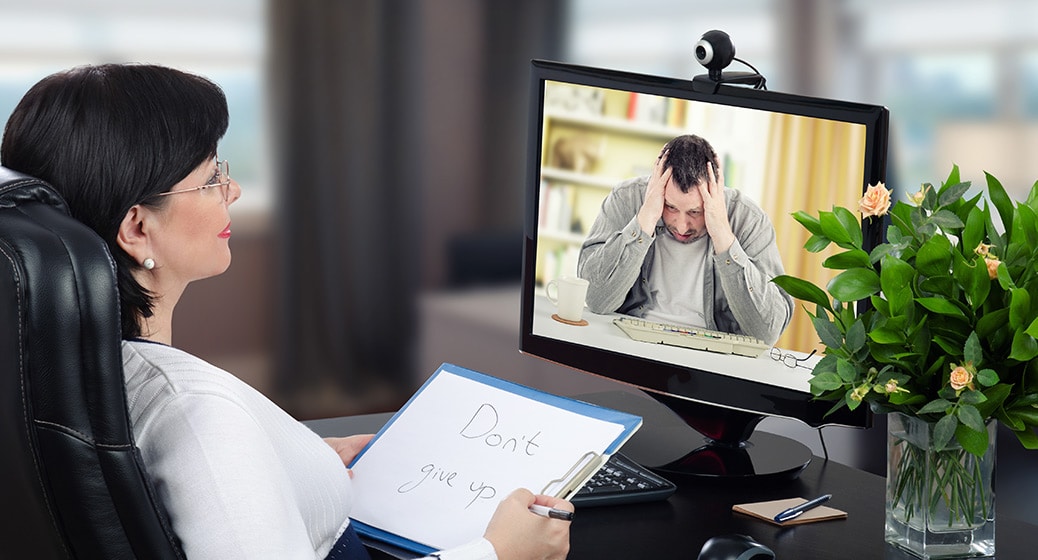It’s been almost 3 years since COVID-19 pandemic, and many people are still adjusting to a “new normal.” For therapists, this new normal likely includes telehealth. Many therapists have continued to offer remote sessions from home offices, citing factors like convenience and cost-effectiveness.
But there are challenges to having an at-home telehealth practice. There are more distractions at home, work-life boundaries can get blurred, and there are privacy considerations for both patients and therapists. Here are 7 ways to establish boundaries with your at-home telehealth practice.
Create a designated workspace
When the world shut down in the spring of 2020, many therapists set up what they thought would be temporary home offices. Now that telehealth is a standard of care, we can be more intentional in creating these spaces. Experts recommend establishing an office that is separate from the rest of your home, professional in appearance, and free from clutter, personal items, or other distractions. While not all therapists have the luxury of using a separate room for their at-home practice, they can use physical barriers like privacy screens or room dividers to designate a discrete space. Headsets and white noise machines can help to protect patient privacy and drown out ambient noise.
Set specific hours
Just because you may have 24/7 access to your home office doesn’t mean that you should have 24/7 availability for your patients. Designate time blocks for seeing patients and doing paperwork, making sure to include meal and movement breaks. It might also be helpful to determine the hours that you will be accessible by phone or email since you no longer have a physical separation between office and home.
Establish routines to start/end the day
Having an at-home telehealth practice means that you don’t have the natural transition of a commute to signal the beginning and end of the work day. It can be tempting to eliminate this transition time and simply throw on some slippers before plopping down at your computer. But having before and after-work routines helps to create boundaries between business and personal time. Maybe you start the day with a “virtual commute” like a quick walk around the neighborhood, or a coffee and newspaper session on the patio.
Dress the part
Sure, you can work from home in your pajama bottoms, but dressing the way you would for in-person sessions helps strengthen the boundary between work and home life. Moreover, due to a process called “enclothed cognition,” the clothes we wear affect brain activity and productivity. It’s okay to wear comfortable clothes– just make sure they are professional and separate from the clothes you use for lounging around the house.
Set expectations with patients and family members
Just like us, patients no longer have the physical separation of home and therapy office. It is important to set guidelines for patients around telehealth sessions. For example, you might want to stress the importance of having a private place to talk that is free from distractions like children or household chores. Similarly, make sure your family members or housemates know what hours you are working and what you expect from them, (e.g., no interruptions, appropriate noise levels, etc).
Isolate work and personal technology
Using technology to conduct therapy sessions means that personal email, social media, and other potential distractions are literally at our fingertips. Make sure you turn off notifications during sessions, or better yet, designate one device for work use and power down all other devices during work hours.
Put on virtual blinders
When you see the sink full of dishes during your lunch break, it might be tempting to run a quick load. However, this blurs the work-home boundary. Designate time blocks for doing housework or other personal activities if these things will be part of your day. Then, put on your virtual “now and later” blinders and focus on work when it’s work time, and personal tasks later in the day.
Conclusion
Having an at-home telehealth practice provides flexibility, convenience, and cost savings. But it is important to create boundaries between work and personal life. To the extent possible, follow the same schedule and routine that you would if you were going into the office. Make sure you communicate expectations to patients around privacy, prioritizing session time, and not multitasking during sessions. And don’t forget to schedule downtime for self-care. Otherwise, instead of working from home, you might feel like you are living at work!
Keep Reading
Want more? Here are some other blog posts you might be interested in.









